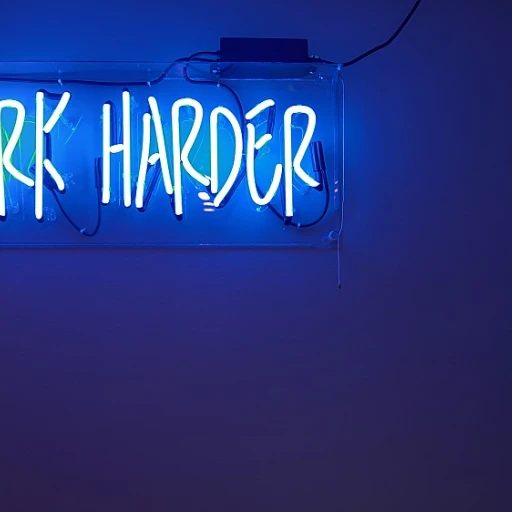Understanding the Evolving Role of the CHRO
Redefining the Role of CHROs in Modern Work Environments
In today's fast-paced business landscape, the Chief Human Resources Officer (CHRO) is stepping away from traditional responsibilities and embracing a more dynamic role. As organizations shift towards agile methodologies, the CHRO's role has expanded to become a vital component in driving organizational agility and innovation. This transformation is essential for businesses striving to keep up with rapid changes in the market and workforce expectations. The modern CHRO is tasked with more than just managing HR operations; they are now expected to be strategic partners and leaders in navigating the complexities of the agile environment. As businesses transition to agile structures, the CHRO must lead the charge in creating an adaptable HR framework that supports continuous improvement and flexibility. This includes championing leadership development to ensure company leaders are equipped to thrive in agile settings. Another critical aspect is how CHROs are pivotal in reshaping talent management and acquisition strategies. In agile organizations, attracting and retaining the right talent is paramount; therefore, the CHRO must innovate recruitment processes to align with the agile philosophy. By prioritizing skills and cultural fit over traditional criteria, CHROs are helping maintain a competitive edge for their companies. Incorporating digital transformation into HR operations is another area where CHROs can make a significant impact. The ability to leverage technology effectively can streamline processes, enhance decision-making, and improve employee experiences. Digital transformation empowers CHROs to use data-driven insights for more informed decisions about talent and organizational growth. Looking ahead, the importance of diversity, equity, and inclusion frameworks becomes even more pronounced. CHROs are responsible for driving these initiatives to ensure that agile practices promote a culture of inclusivity and respect for diverse perspectives. By doing so, businesses can unlock the full potential of their workforce, fostering creativity and innovation. To delve deeper into how agile HR practices are shaping future work trends, you can explore more insights at the Innovative CHRO Blog here.Leadership in Agile Organizations
Embracing Agile Leadership Styles
In the dynamic environment of agile organizations, the Chief Human Resources Officer (CHRO) must adopt a leadership style that is both flexible and adaptive. Unlike traditional hierarchical models, agile leadership emphasizes collaboration, empowerment, and continuous learning. This shift requires CHROs to cultivate a culture where teams are encouraged to experiment and innovate, thereby driving the organization forward.
Agile leadership is not just about managing change; it's about inspiring it. CHROs play a pivotal role in setting the tone for this transformation by promoting transparency and open communication across all levels of the organization. By doing so, they help break down silos, enabling cross-functional teams to work more effectively and efficiently.
Moreover, agile leaders are adept at managing ambiguity and uncertainty, which are inherent in today's fast-paced business landscape. They must be comfortable with making decisions based on incomplete information and be willing to pivot strategies as new insights emerge. This requires a mindset that values adaptability and resilience, qualities that are essential for steering the organization through complex challenges.
As CHROs navigate this new terrain, they must also focus on developing leadership capabilities within their teams. This involves identifying and nurturing potential leaders who can champion agile principles and drive the organization's mission forward. By investing in leadership development, CHROs ensure a pipeline of talent that is ready to tackle future challenges with agility and confidence.
In summary, the CHRO's role in agile organizations is not just about managing human resources; it's about leading a cultural shift towards agility. By fostering an environment of trust, collaboration, and continuous improvement, CHROs can position their organizations for sustained success in an ever-evolving marketplace.
Talent Management and Acquisition Strategies
Crafting Dynamic Talent Management Strategies
In the fast-paced world of agile organizations, the Chief Human Resources Officer (CHRO) plays a pivotal role in redefining talent management and acquisition strategies. As organizations pivot to more flexible and responsive business models, the traditional approaches to hiring and retaining talent are being challenged and reshaped. Agile organizations demand a workforce that is not only skilled but also adaptable and resilient. The CHRO must therefore focus on cultivating a talent pool that thrives in a dynamic environment. This involves identifying individuals who possess not just the technical skills required for specific roles, but also the soft skills necessary for collaboration and innovation. One key strategy is to embrace a continuous recruitment process. Unlike the conventional model of hiring for specific roles as they become vacant, continuous recruitment involves proactively seeking out potential candidates who align with the organization's values and culture. This approach ensures that the organization is always ready to onboard talent that can drive its agile initiatives forward. Moreover, the CHRO should leverage data analytics to enhance talent management. By utilizing data-driven insights, HR leaders can better understand workforce trends, predict future skill requirements, and tailor their recruitment strategies accordingly. This aligns with the broader digital transformation efforts discussed earlier, where technology plays a crucial role in shaping the future of HR. Additionally, fostering an inclusive workplace culture is paramount. As highlighted in discussions on diversity, equity, and inclusion, creating an environment where diverse perspectives are valued can significantly enhance creativity and problem-solving capabilities. This, in turn, supports the agile organization's need for innovative solutions and continuous improvement. By implementing these dynamic talent management strategies, CHROs can ensure that their organizations remain competitive and capable of navigating the complexities of an ever-evolving business landscape.Digital Transformation and the CHRO
Embracing the Digital Shift
As Chief Human Resources Officers (CHROs) continue to navigate the complexities of agile organizations, one undeniable truth stands out: digital transformation is essential. In today's rapidly evolving business landscape, CHROs must lead the charge in integrating digital technologies into HR practices to remain competitive and effective. Digital transformation in human resources isn't just about adopting new software or automating processes; it's about fundamentally changing the way HR operates. From leveraging data analytics to make informed decisions, to using artificial intelligence for recruitment and talent management, the digital shift offers tremendous potential for HR leaders. One of the most significant aspects of digital transformation is the ability to enhance employee engagement and experience. By using digital platforms, CHROs can facilitate better communication, foster a culture of continuous feedback, and provide employees with seamless access to necessary tools and resources. This aligns perfectly with the agile organization's focus on flexibility and responsiveness. Moreover, digitalization enables CHROs to implement more effective Talent Management and Acquisition Strategies, as discussed in previous sections. With advanced data analytics, HR leaders can pinpoint skills gaps, identify upskilling opportunities, and create more tailored development programs. This results in a more agile workforce ready to meet future challenges. The role of the CHRO in this digital era is also closely linked to promoting Diversity, Equity, and Inclusion (DEI). By utilizing digital tools, HR leaders can ensure fair and unbiased recruitment processes, offer personalized development paths, and foster an inclusive workplace culture. As agile organizations continue to adapt and evolve, CHROs must prioritize digital transformation within their HR functions. By doing so, they not only enhance their organization's agility but also prepare their workforce for the future's inevitable challenges and opportunities.The Importance of Diversity, Equity, and Inclusion
Fostering a Diverse and Inclusive Work Environment
In the ever-evolving landscape of agile organizations, the Chief Human Resources Officer (CHRO) plays a crucial role in steering efforts towards diversity, equity, and inclusion (DEI). This responsibility goes beyond simply meeting organizational goals; it involves creating a workplace culture where every employee feels valued and empowered to contribute their unique perspectives and skills. In agile settings, leadership is redefined, and the CHRO must set the pace for a culture that not only welcomes but thrives on diversity. This involves ensuring equitable access to opportunities for all employees and recognizing the untapped potential within diverse talent pools. As mentioned earlier, agile leaders are those who can adapt quickly to changes and foster an environment conducive to creativity and innovation. Promoting DEI is a critical component of this. Building an inclusive environment requires intentional strategies. Talent management must be informed by DEI principles, and acquisition strategies should target diverse candidates at every level. By integrating these elements, organizations can enhance their adaptability, foster innovation, and improve employee satisfaction and retention rates. Incorporating technology also plays a vital role in overcoming traditional barriers to diversity and inclusion. Digital transformation enables data-driven decision-making, allowing CHROs to more accurately identify gaps and measure progress in DEI initiatives. The use of platforms and tools can further support efforts to create an inclusive culture through virtual collaboration and remote working solutions, which accommodate employees' diverse needs. Real-world examples illustrate the transformative power of robust DEI policies in agile organizations. Companies that prioritize these values do not only benefit from a richer talent pool but also enjoy enhanced creativity, better problem-solving capabilities, and improved overall performance. These organizations are better positioned to tackle the complex challenges of the modern world, proving that DEI is not merely a box to check but a profound business imperative.Real-World Examples and Case Studies
Practical Insights from Leading Agile Organizations
As the role of Chief Human Resources Officers (CHROs) evolves, real-world examples provide valuable insights into how agile organizations are successfully navigating the complexities of modern HR. These case studies not only illustrate the principles discussed in earlier sections but also highlight innovative strategies that can be adapted by other organizations.
One such example is Spotify, a company renowned for its agile approach. Spotify's HR team, led by their CHRO, has implemented a decentralized model that empowers teams to make decisions autonomously. This approach aligns with the leadership style needed in agile organizations, as discussed earlier, where flexibility and quick decision-making are crucial. By fostering a culture of trust and collaboration, Spotify has been able to attract and retain top talent, which is a testament to their effective talent management and acquisition strategies.
Another noteworthy example is ING, a global financial institution that has embraced digital transformation under the guidance of their CHRO. ING has redefined its HR processes to support a digital-first mindset, ensuring that their workforce is equipped with the necessary skills to thrive in a rapidly changing environment. This transformation underscores the importance of digital readiness for CHROs, as highlighted in our discussion on digital transformation.
Furthermore, Salesforce has made significant strides in promoting diversity, equity, and inclusion (DEI) within its agile framework. By integrating DEI initiatives into their core business strategies, Salesforce has not only enhanced their organizational culture but also improved their overall business performance. This aligns with the crucial role of DEI in fostering an inclusive workplace, which we explored earlier.
These organizations demonstrate that the principles of agility, when applied effectively, can lead to significant advancements in HR practices. By learning from these examples, CHROs can better navigate the future of human resources, adapting strategies that are both innovative and impactful.



